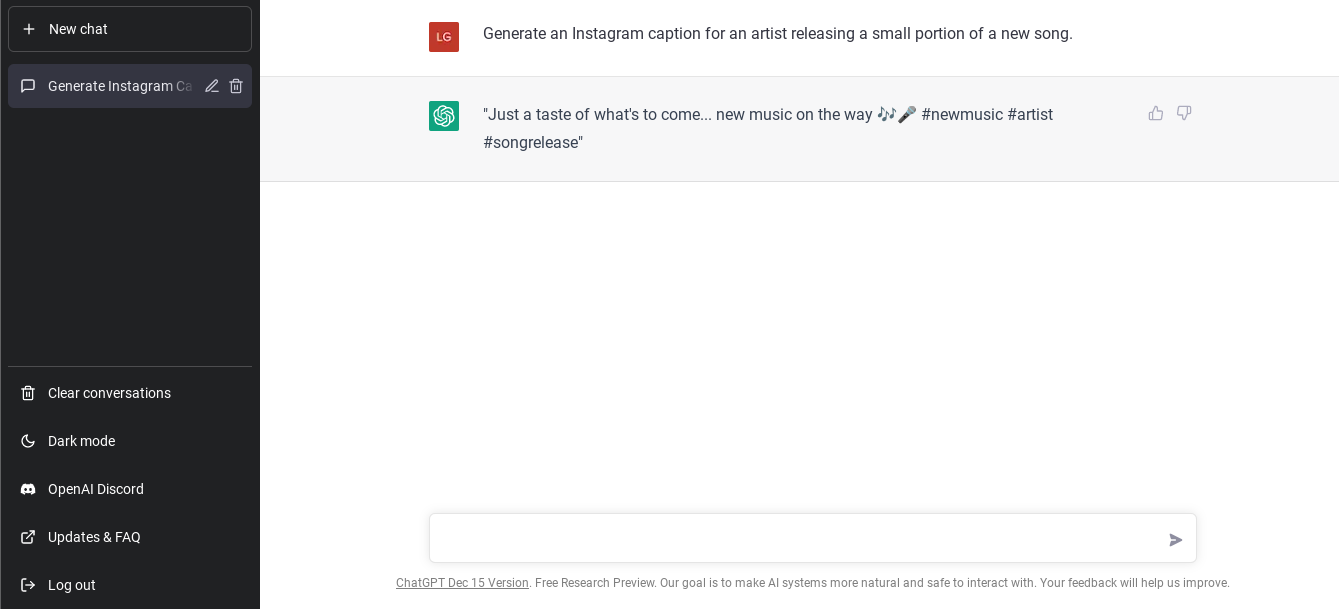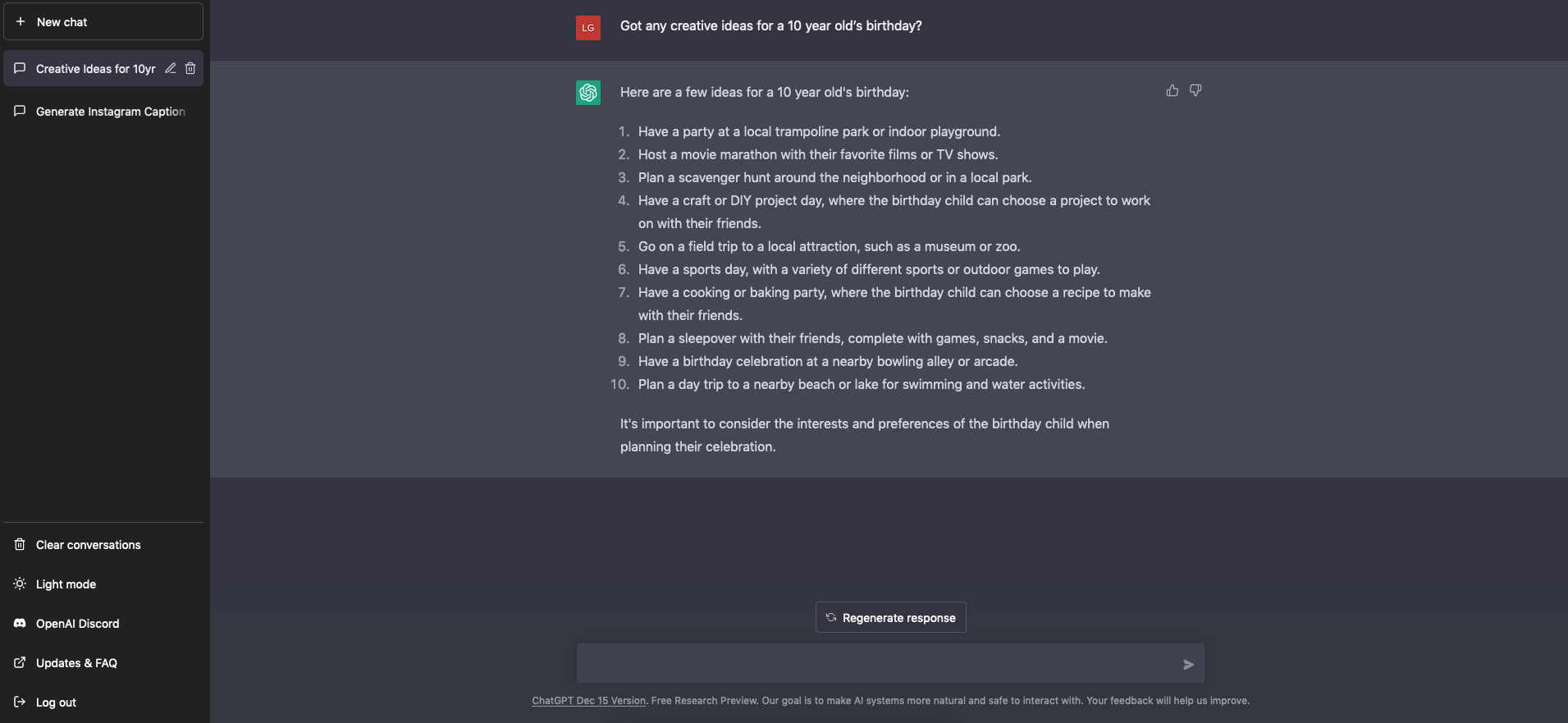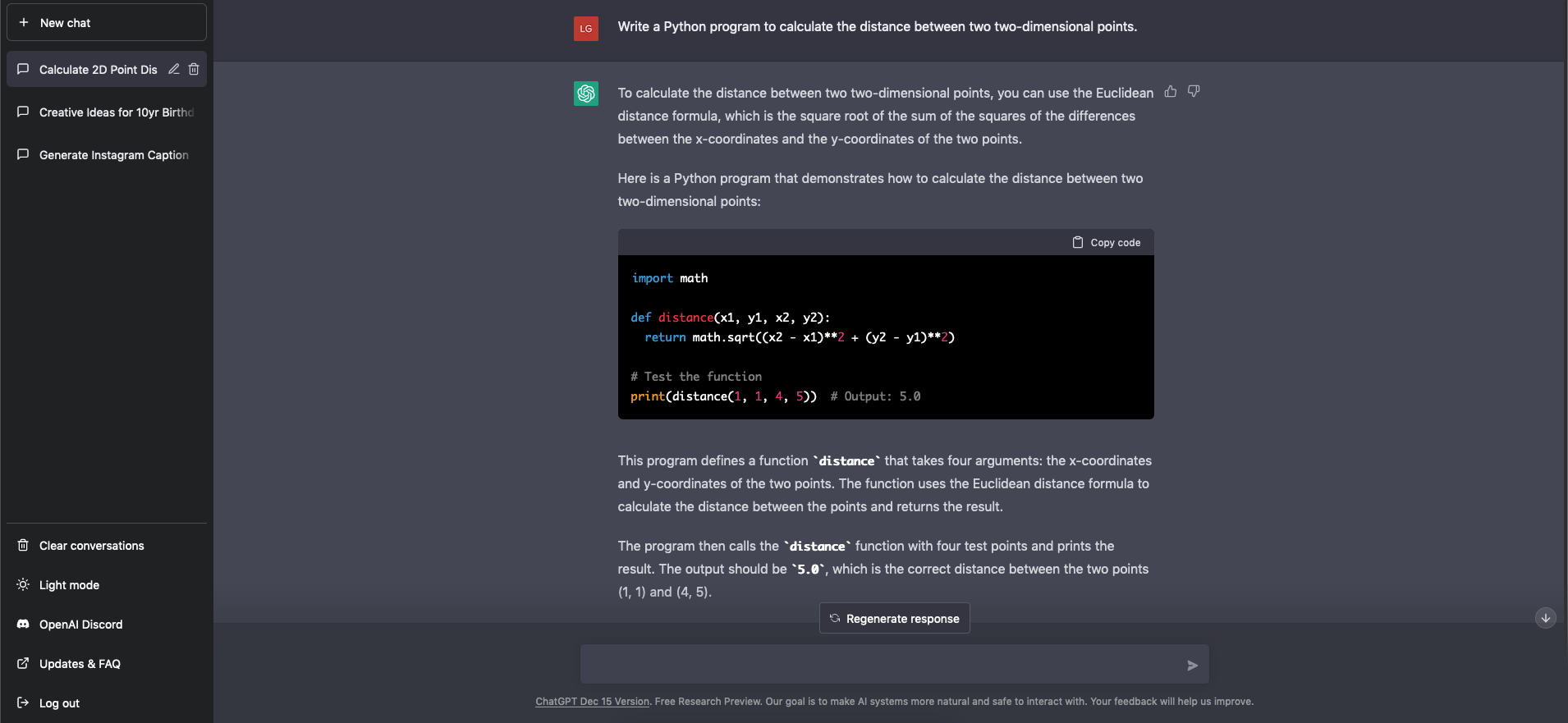On ChatGPT
Background
For those of you who do not know, ChatGPT is “a computer program designed to assist with answering questions and providing information on a wide variety of topics,” as described by itself. In other words, it is an AI program that can intelligently, and for the most part, accurately answer questions. It works by using the GPT-3 (Generative Pretrained Transformer v3) AI model by OpenAI finetuned for language. If you haven’t tried it yet, you definitely should, although you do have to verify your humanity by using a phone number.
What ChatGPT can do
ChatGPT is extremely advanced, but it’s hard to understand really how powerful it is unless you try it yourself. Here are a few examples of it in use:
Using ChatGPT to generate Instagram captions:

Creative ideas for a 10-year-old’s birthday party:

As you can see, ChatGPT is exceptionally creative, which is not typically a trait associated with computers. However, it can go even further. One of its greatest capabilities is to generate code. Here, I’ve shown how ChatGPT can be used to generate a program in Python that calculates the distance between two 2D points:
 Notice how not only does ChatGPT generate working code (I tested it), but it also provides a useful and informative description!
Notice how not only does ChatGPT generate working code (I tested it), but it also provides a useful and informative description!
Cheating concerns
There are valid fears of ChatGPT’s proficiency being used for cheating. Think of schools. One of my friends just wrote an entire essay for his English class on a complicated subject. The essay wasn’t directly copied from ChatGPT, but the basic structure and most of the words were still intact. It was a very well-done paper, citing resources and using accurate information. He got an A. This is scary for some people, but I’m not worried. Here’s why: In the 1970s, calculators were starting to appear in classrooms. There were controversies about the new technology, some worrying that calculators would ruin students’ computational abilities, students would become too reliant upon machines, and that they wouldn’t learn how to estimate or learn from their errors. Eventually, College Board mandated the use of calculators on tests. The most useful skills that are learned in school are oftentimes not rote facts; they’re concepts, understanding, and how to use tools. The calculator was a tool, and students were encouraged to take full advantage of it. As technology progresses, we should not ban use of devices, rather we should teach people how to use the tools available. This allows people to write papers and code in a fraction of the time that it would normally require, therefore enabling companies to work much more efficiently.
What this means for the future
As shown, ChatGPT is an amazing tool for generating creative (kind of) and accurate responses, but it does have limitations. ChatGPT, or any other AI for that matter, will never come up with a truly original idea. The reason for this is that AI is trained on things made by humans, past works. Since an AI simply reiterates and shuffles around human words and human ideas, an artificially intelligent program will never have the human epiphany that comes as a result of natural human creativity. People have long worried about their work being replaced by artifically intelligent programs, but it hasn’t really happened on a large scale, and this is because of the need for true creativity. As long as humans retain creativity, we remain relevant.